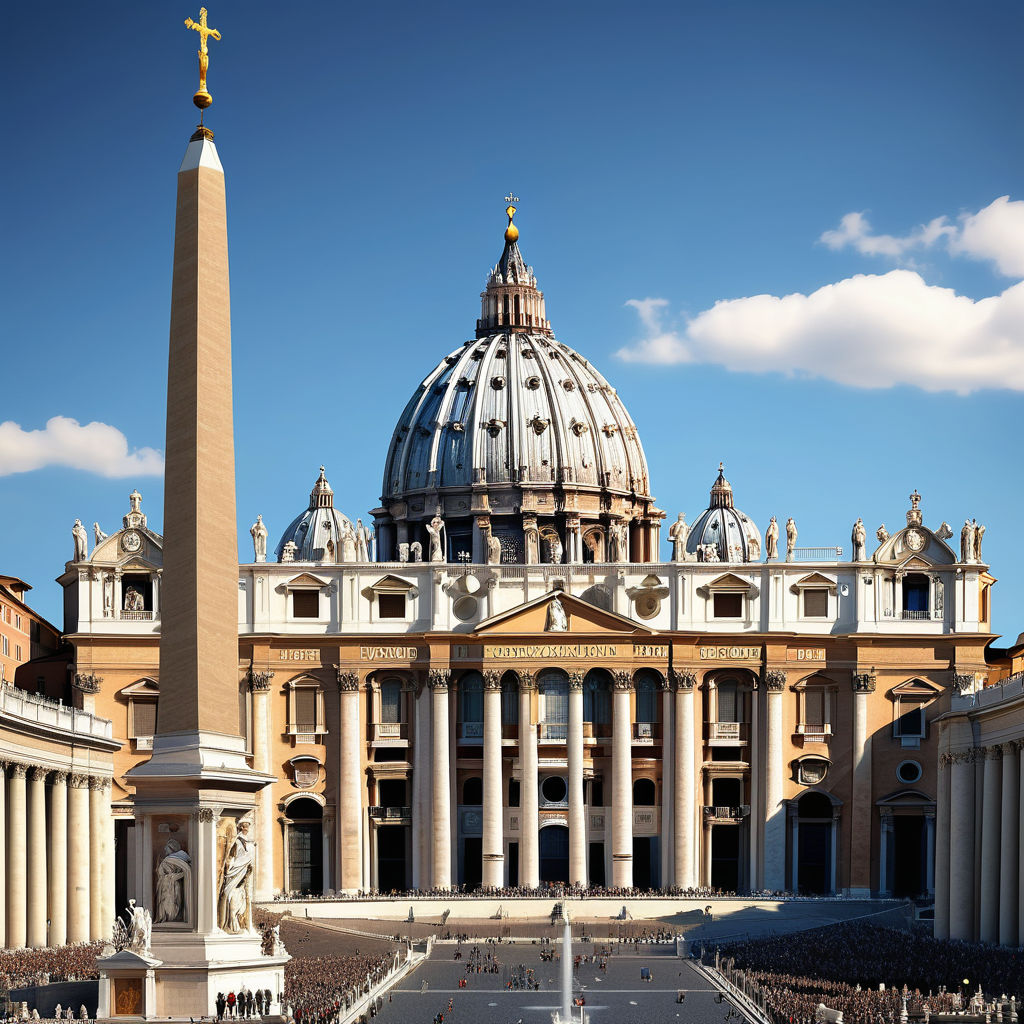Introduction to Vatican City: The Heart of the Roman Catholic Church
Exploring the Cultural Heritage and Global Influence of Vatican City

Introduction to Vatican City
Vatican City, the smallest independent state in the world both in area and population, is an enclave within Rome, Italy. It serves as the spiritual and administrative center of the Roman Catholic Church. Covering an area of approximately 44 hectares (110 acres), Vatican City is home to around 800 residents, including the Pope, cardinals, members of the Swiss Guard, and other clergy and laypeople. Despite its small size, Vatican City boasts a rich cultural heritage, featuring iconic landmarks such as St. Peter’s Basilica, the Sistine Chapel, and the Vatican Museums, which house an extensive collection of art and historical artifacts.
Cross-national and Cross-cultural Understanding
Vatican City's approach to cross-national and cross-cultural understanding is deeply rooted in its mission to foster global unity and peace through religious and cultural dialogue. As the heart of the Roman Catholic Church, the Vatican engages with diverse cultures worldwide, promoting mutual understanding and respect. Significant cultural exchanges occur through various international partnerships and programs. The Vatican hosts numerous interfaith dialogues, cultural events, and academic conferences that bring together people from different cultural and religious backgrounds. These initiatives aim to bridge cultural divides and promote global peace. Educational programs play a crucial role in fostering cross-cultural understanding. Institutions such as the Pontifical Universities attract students from all over the world, offering a unique environment where diverse perspectives are shared and respected. Additionally, the Vatican Observatory collaborates with scientific institutions globally, emphasizing the importance of integrating faith and science in addressing global challenges. International partnerships enhance cross-cultural engagement. The Vatican is an active participant in international organizations such as the United Nations, the World Council of Churches, and various interfaith coalitions. These partnerships facilitate cultural exchanges, collaborative research, and humanitarian efforts, strengthening the Vatican’s role in promoting global harmony.
Interactions and Social Dynamics
Interactions between the residents of Vatican City and foreigners are characterized by a welcoming and respectful attitude, reflective of the Vatican's mission to foster global unity. Social behaviors in Vatican City are influenced by the principles of hospitality, humility, and respect for all individuals. Social behaviors emphasize politeness and warmth. Visitors to Vatican City are often greeted with a friendly demeanor, and interactions are marked by a genuine interest in learning about different cultures and backgrounds. The Vatican’s role as a global religious center attracts pilgrims, tourists, and scholars, creating a dynamic environment where cultural exchange is a daily occurrence. Communication styles in Vatican City are generally formal yet welcoming. Clergy and laypeople alike engage in respectful and thoughtful conversations, often emphasizing the importance of listening and understanding. Non-verbal communication, such as gestures of blessing or reverence, plays a significant role in interactions, adding to the overall sense of respect and humility. Language plays a vital role in facilitating interactions. Latin is the official language of the Holy See, while Italian is commonly used in daily communication. Additionally, many residents and officials are multilingual, speaking languages such as English, Spanish, French, and German. This multilingualism enhances interactions with visitors and supports the Vatican’s global outreach efforts.
Views on Dating and Relationships
Dating and relationships within Vatican City are unique due to the religious and clerical nature of its residents. Most residents, including clergy and members of religious orders, take vows of celibacy, precluding romantic relationships and marriage. However, laypeople who work or live within the Vatican may engage in dating and relationships, guided by Catholic teachings on love and family. The societal views towards dating and relationships are influenced by Catholic doctrine, which emphasizes the sanctity of marriage and the importance of family life. Relationships are viewed through the lens of mutual respect, commitment, and adherence to religious values. For laypeople, dating is approached with a long-term perspective, often with the intention of discerning marriage. Cultural expectations and traditions, such as the importance of family and adherence to religious teachings, significantly impact relationships. Understanding and respecting these cultural norms is essential for successful relationships within the Vatican’s unique context.
Marriage and Family
Marriage within Vatican City is primarily relevant to laypeople, as clergy and members of religious orders are bound by vows of celibacy. Marrying foreigners is accepted, provided it aligns with Catholic teachings and receives appropriate approvals. Legal considerations for marriages within Vatican City involve adherence to canon law and civil law. Marriages must be conducted according to the rites of the Roman Catholic Church, and there is often a thorough process of preparation and discernment for couples. The Vatican’s civil jurisdiction also oversees aspects of marriage legality and documentation. Socially, families in Vatican City value adherence to Catholic traditions and teachings. Family life is centered around faith, with a strong emphasis on religious observances, community involvement, and raising children in the Catholic faith. Marrying into a Vatican family often involves participating in religious and community activities, fostering a sense of belonging and shared values.